Sample information |
|
| Picture |
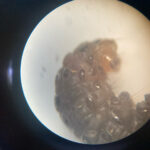
|
|---|---|
| Location | |
| Collection date | 09/06/2024 |
| Captive / Cultivated? | Wild-caught |
| Group | Edmund Burke School |
| Observations | I found the arthropod in a small park under a rock during the fall. it was about 75 degrees outside. The arthropod was in a terrestrial habitat. It is gray, and has many legs.
|
| Putative identification | Arthropoda Insecta Lepidoptera Crambidae Nomophila Nomophila nearctica |
Methods |
|
| Extraction kit | DNeasy (Qiagen) |
| DNA extraction location | Whole arthropod |
| Single or Duplex PCR | Single Reaction |
| Gel electrophoresis system | MiniOne |
| Buffer | TBE |
| DNA stain | GelGreen |
| Gel images |
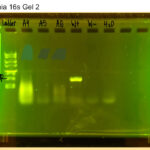
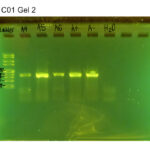
|
| Protocol notes | DNA Extraction: I made sure to crush the arthropod really well, the arthropod was small, so no dissection was necessary Gel Electrophoresis, arthropod CO1: 1 – DNA ladder 2 – A4 DNA 3 – A5 DNA 4- A6 DNA 5 – Arthropod positive control 6 – Arthropod negative control 7 – water Analysis: all controls showed expected bands, and the sample showed a arthropod CO1 band. Gel electrophoresis, Wolbachia: 1 – DNA ladder 2 – A4 DNA 3 – A5 DNA 4- A6 DNA 5 – Wolbachia positive control 6 – wolbachia negative control 7 – water Analysis: all controls showed expected bands, and the sample did not show a wolbachia band.
|
Results |
|
| Wolbachia presence | No |
| Confidence level | High |
| Explanation of confidence level | All of my controls worked as expected. I did not have any problems |
| Wolbachia 16S sequence | |
| Arthropod COI sequence |
|
| Summary | The Nomophila nearctica was found to be negative for Wolbachia. |
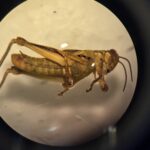 Differential Grasshopper – Melanoplus differentialis
Differential Grasshopper – Melanoplus differentialis Pill Bug (Armadillidium vulgare) – Draft
Pill Bug (Armadillidium vulgare) – Draft Melanoplus Femurrubrum
Melanoplus Femurrubrum Grasshopper – Orthoptera
Grasshopper – Orthoptera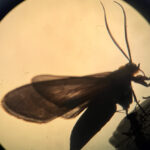 Cisseps Fulvicollis
Cisseps Fulvicollis